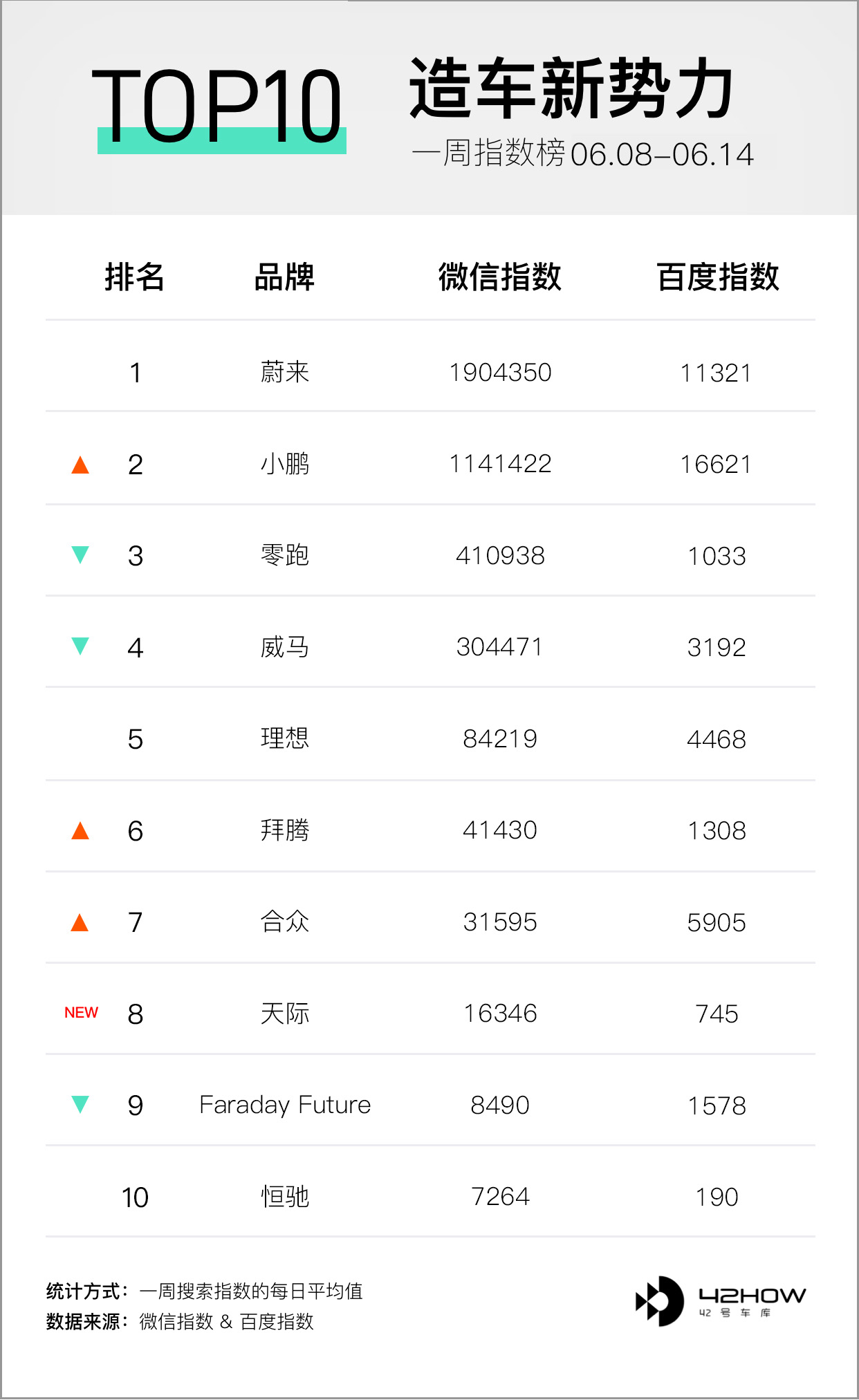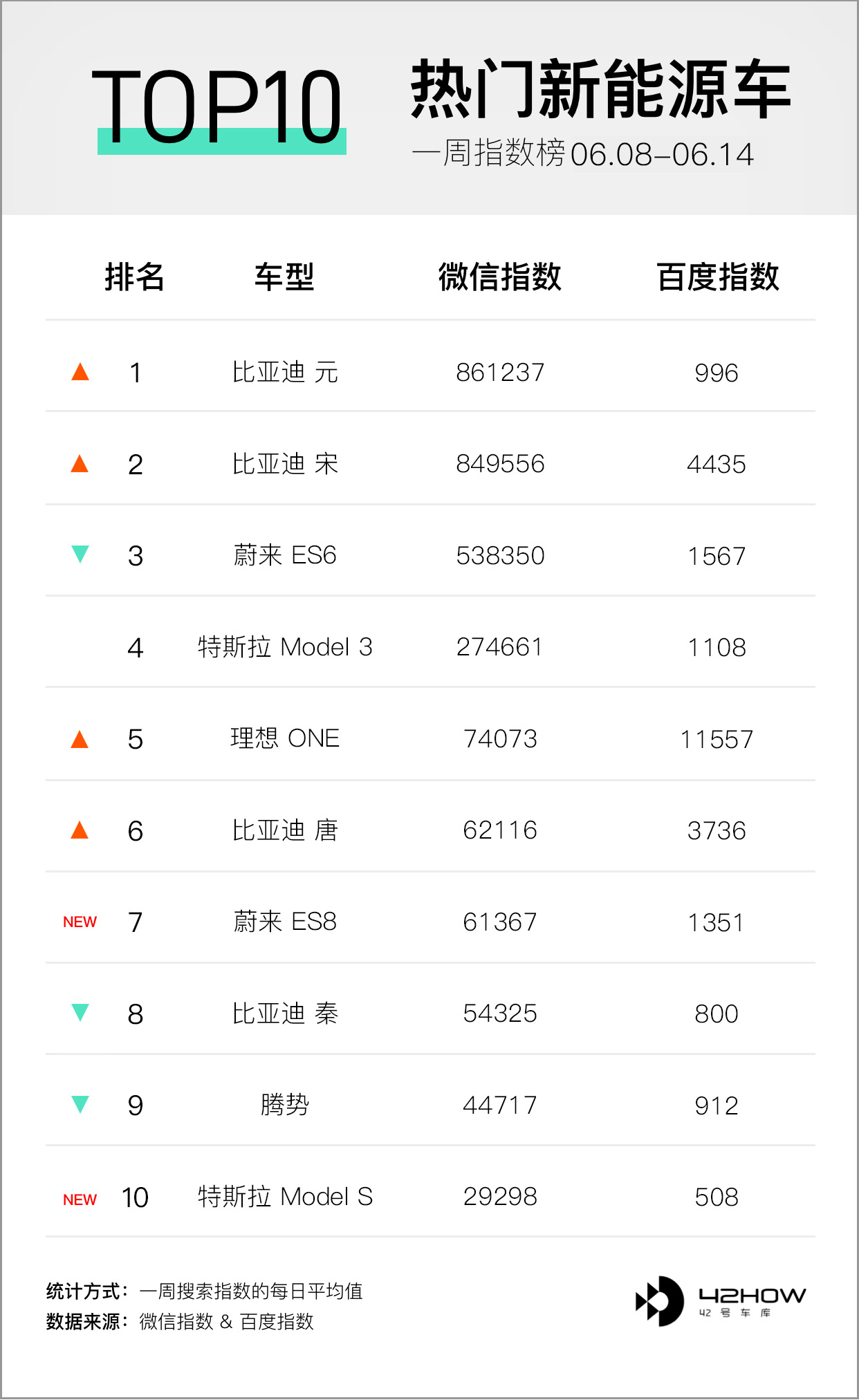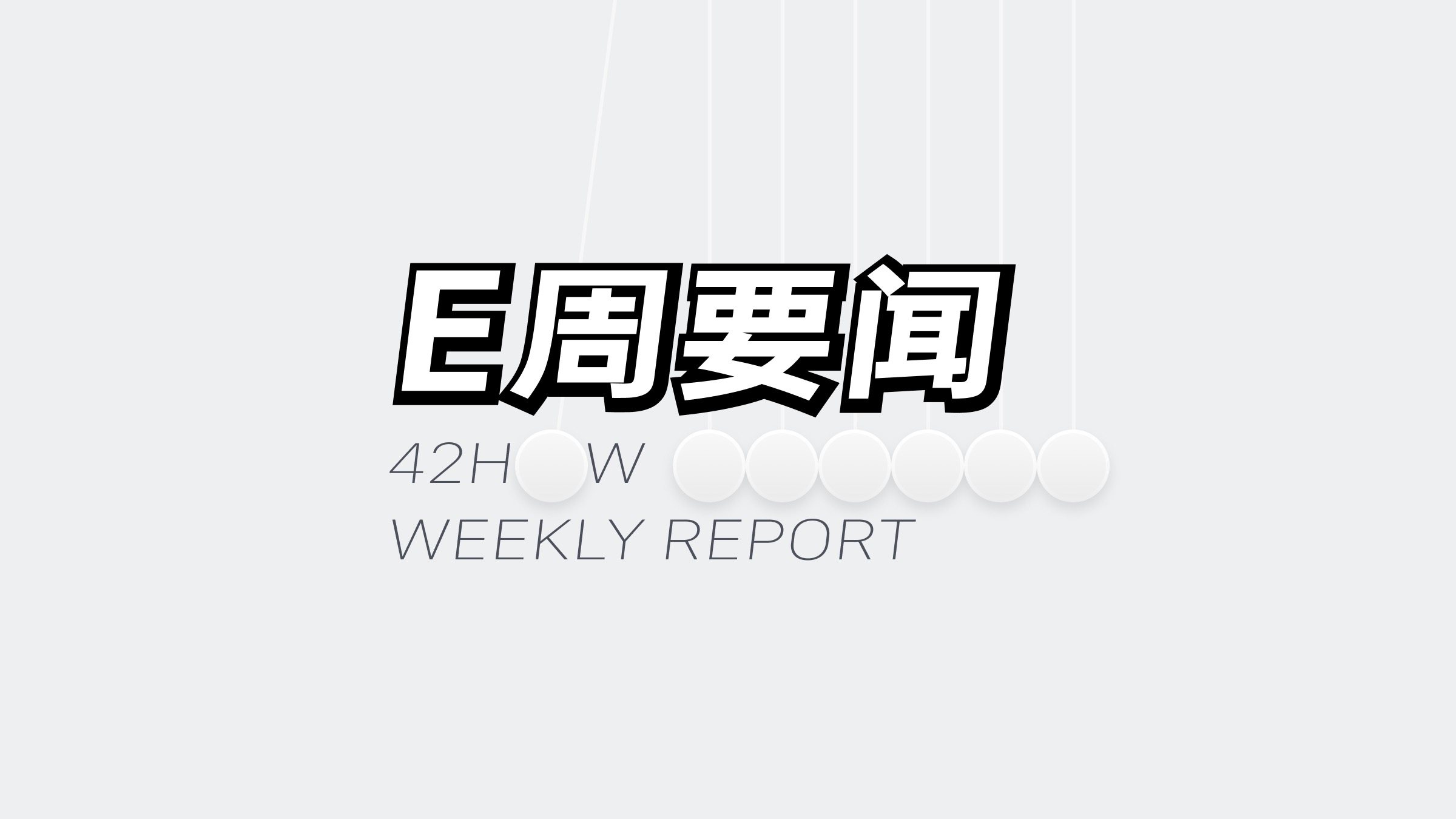Weekly Index


Weekly News
Improved Range of XPENG P7
On June 11, the XPENG P7 produced in Xiaoguan’s self-built factory appeared in the directory of the Ministry of Industry and Information Technology, and the range of some models has been slightly increased.
The range of the rear-wheel-drive long-range version NEDC has been increased from 568km to 586km, an increase of 18km. The range of the rear-wheel-drive ultra-long-range version NEDC has been increased from 656km to 670km, an increase of 14km. The range of the four-wheel-drive high-performance version has been increased from 552km to 562km, an increase of 10km.
The main reason for the increase in range is that the X-Pedal driving mode, originally only equipped with the rear-wheel-drive ultra-long-range intelligent driving version, has been installed in all other versions. The X-Pedal driving mode can bring about nearly 100% energy recovery rate during user driving, resulting in nearly 30% of the range coming from energy recovery, thus improving range performance.
In addition, the BMS software for the rear-wheel-drive long-range version has been optimized, making the allocation of electricity consumption more reasonable, which has also helped to improve the range.
Quick Review:
The pre-car owners who have not yet received their cars should be very happy to see the slightly increased range. However, there is also bad news. On June 11, pre-car owners who ordered the P7 successively received text messages: Due to the impact of the overseas epidemic, the software testing progress of XPilot 2.5 developed jointly by XPeng and overseas suppliers is delayed, and it is expected to be updated and implemented OTA in October this year. The vehicles are expected to be delivered by the end of June.
As compensation, XPENG will provide power battery lifetime quality assurance worth RMB 3,999 for free to car owners. It is unclear whether these two pieces of news can make the minds of XPENG P7 pre-car owners more balanced.
Parameters of Lithium Iron Phosphate Model 3 RevealedOn June 11th, the domestically produced Tesla Model 3 equipped with CATL lithium iron phosphate battery appeared in the MIIT catalog. The battery energy density of Model 3 using lithium iron phosphate battery version is 125 Wh/kg, and the range under working condition is 468 km, with a curb weight of 1745 kg.
Compared with the standard range upgrade version of Model 3 using ternary battery version, the range under working condition has increased from 445 km to 468 km, while the battery energy density has decreased from the original 145 Wh/kg to 125 Wh/kg.
With the same curb weight as the domestically produced long range version of Model 3, the battery weight is 455 kg, and according to the energy density of 125 Wh/kg, the battery capacity is about 57 kWh.
Fast review:
After the lithium iron phosphate version of the standard range upgrade version Model 3 is put into mass production, the ternary lithium version of the standard range upgrade version Model 3 will be replaced. The upcoming domestically produced Model 3 is expected to have two versions: the standard range upgrade version Model 3 with CATL lithium iron phosphate battery, with a range of 468 km. The long range version Model 3 with LG Chemical ternary lithium battery, with a range of 668 km.
Tesla has also stated that prices will not change in the short term. From the perspective of the range of the lithium iron phosphate version, it is an increase in quantity without an increase in price. It remains to be seen how well it performs, especially in winter.
NIO releases second-generation home charger
On June 11th, NIO released the second-generation home charger, which is mainly optimized in terms of appearance, volume and performance compared with the first-generation home charger. In terms of performance, two upgrades have been made:
-
The first-generation home charger would stop charging directly when encountering low voltage, while the second generation will actively adapt to the voltage fluctuations by lowering the current, and automatically resume charging when the voltage returns to normal.
-
The second-generation home charger has an emergency stop automatic reset button, without the need for a rotating button, and unplugging the gun will release the emergency stop state.
Before June 25, 2020 (inclusive), NIO will provide users with the first generation of NIO Home Charger for installation. After June 25, 2020, NIO will provide users with a free upgrade to install the second generation of NIO Home Charger. In addition, the second generation of Home Charger will be launched on the NIO Dealer Mall on June 25. Non-first time users can purchase it on the mall.
Quick Comments:
In addition to the release of the second generation charging pile, on June 8, some community netizens discovered that their ES6 had been pushed with the latest system. Specific updates include: the addition of OS light mode. The white tone of the in-car display visually looks much cleaner. In terms of function optimization, the 360-degree surround parking image and front/rear image simultaneous display were supported in some scenes, and part of the recognition rate and successful parking rate of the full-automatic parking system (SAPA); NOMI also supported the Bluetooth phone address book.
In terms of function repair, we have fixed some scenes where the outside rearview mirror does not return to the normal position after occasionally hanging up P gear; some scenes where the key unlocks and some account settings return to the default state; and an occasional vehicle wake-up event where NOMI has a long start-up time.
May New Energy Vehicle Sales Released
On June 9th, according to data released by the China Passenger Car Association, Model 3 led the new energy market with sales of 11095 units in May. Among the new forces in car manufacturing, NIO’s ES6 and Ideal ONE ranked 5th and 10th respectively in the new energy vehicle sales ranking with monthly sales of 2685 units and 2148 units respectively.
In the high-end SUV list, NIO ES6 and Ideal ONE also ranked 8th and 10th respectively, being the only Chinese domestic-brand models in the high-end SUV market.
Quick Comments:
Model 3 sales in May were 11,095 units, a 205.2% increase from the previous month, and returned to the level at the end of the first quarter. With the delivery of domestic long-range version models, sales in June are expected to reach new highs.The sales of NIO ES6 remain stable at around 2500 units, ranked first among luxury all-electric SUV models. Although the sales of Li Xiang ONE slightly decreased in May, it can be seen that several negative events in May have had some impact. The data for June needs to be observed.
BMW i8 announced discontinued production
On June 13th, BMW announced the official discontinuation of the i8. The last i8 was off the production line on June 11th at the Leipzig factory in Germany. Currently, there is no successor to the i8. After the i8 is discontinued, the Leipzig factory will continue to produce the i3.
Hans-Peter Kemser, the head of the Leipzig factory, said: “The i8 embodies BMW’s transformation to electric cars, which is incomparable to any other model.” The BMW i8 debuted in 2014, and a total of 20448 units have been produced. It is also BMW’s first plug-in hybrid model.
Quick Comment:
The era of the i8 has ended, but BMW’s acceleration towards electric cars has not stopped. On June 10th, BMW’s first pure electric SUV iX3 entered the trial production stage, and 200 units have been produced. After these cars complete testing, BMW iX3 will be fully put into production in the next few months and delivered by the end of this year.
In addition, iX3 will be equipped with a 74 kWh battery, with a WLTP range of 440 kilometers and a total motor power of 210 kW. According to the plan, Shenyang Dadong factory will start production of iX3 in late summer.
SH-Touring E20X all-electric vehicle begins reservations
On June 10th, SH-Touring E20X all-electric vehicle began reservations, jointly launched by “Jianghuai Volkswagen”, “Suning Auto” and “Botech Yuezhen”.
SH-Touring E20X was officially launched in 2019, with a manufacturer’s suggested retail price of 128,000-138,000 yuan, positioned as an A0-level SUV, with a length, width and height of 4135/1750/1565 mm and a wheelbase of 2490 mm.## Translation
In terms of power, the car is equipped with a permanent magnet synchronous motor with a maximum power of 116 horsepower and a peak torque of 270 N·m. It is also equipped with a 49.5 kWh ternary lithium-ion battery with a NEDC range of 402 kilometers. It will be sold in Suning’s offline stores.
Quick Review:
Suning is a well-known brand in China. It can be seen that Volkswagen is trying some new sales methods through the Sihao brand, achieving low-cost and high-efficiency customer acquisition through Suning’s offline stores. Jianghuai Volkswagen was established on December 22, 2017. It is a joint venture between Volkswagen Group and Jianghuai Automobile Group. The registered capital is 2 billion yuan, and the equity ratio of the two parties is 50%:50%.
Bortosue Yuezhen, which is relatively unfamiliar to many people, was established in 2009 and is a comprehensive telematics service provider that can provide active safety, automotive electronics, underlying automotive software, intelligent operating systems, application software, etc.
This article is a translation by ChatGPT of a Chinese report from 42HOW. If you have any questions about it, please email bd@42how.com.
